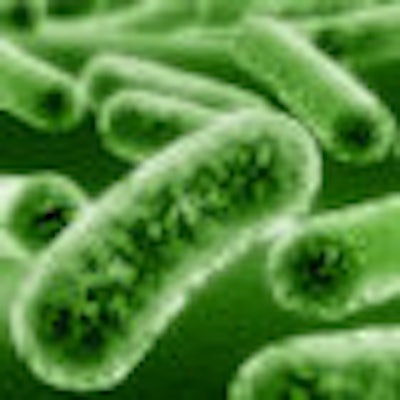
Microbiologists at the University of Rochester Medical Center have identified the protein that allows Streptococcus mutans to gain a foothold in heart tissue, where it can lead to endocarditis (Infection and Immunity, June 2011, Vol. 79:6, pp. 2277-2284). Their work raises the possibility of creating a screening tool to gauge a dental patient's vulnerability to the condition.
Normally, S. mutans resides solely in the oral cavity. But sometimes, particularly after a dental procedure or even vigorous flossing, the bacteria enter the bloodstream. There, the immune system usually destroys them, but occasionally they travel to the heart and colonize its tissue, especially heart valves. Infection from this bacteria is a leading cause of endocarditis, which can be deadly.
"When I first learned that S. mutans sometimes can live in the heart, I asked myself: Why in the world are these bacteria, which normally live in the mouth, in the heart? I was intrigued. And I began investigating how they get there and survive there," said lead study author Jacqueline Abranches, PhD, a research assistant professor in the department of microbiology and immunology, in a university news release.
Abranches and her team at the university's Center for Oral Biology discovered that a collagen-binding protein known as CNM gives S. mutans its ability to invade heart tissue. In laboratory experiments, scientists found that strains with CNM are able to invade heart cells, while strains without CNM are not.
When the team knocked out the gene for CNM in strains in which it's normally present, the bacteria were unable to invade heart tissue. Without CNM, the bacteria simply couldn't gain a foothold; their ability to adhere was about one-tenth of what it was with CNM.
The researchers also studied the response of wax worms to the various strains of S. mutans. They found that strains without CNM were rarely lethal to the worms, while strains with the protein were lethal 90% of the time. When they removed CNM in those strains, they were no longer lethal -- those worms thrived.
These findings may someday enable doctors to prevent S. mutans from invading heart tissue. And since some strains of S. mutans have CNM and others do not, in the near future doctors may be able to gauge a patient's vulnerability to a heart infection caused by the bacteria.
Abranches has identified five specific strains of S. mutans that carry the CNM protein, out of more than three dozen strains examined. CNM is not found in the most common type of the bacteria found in people, type C, but is present in rarer types of S. mutans, including types E and F.
"It may be that CNM can serve as a biomarker of the most virulent strains of S. mutans," Abranches said. "When patients with cardiac problems go to the dentist, perhaps those patients will be screened to see if they carry the protein. If they do, the dentist might treat them more aggressively with preventive antibiotics, for example."
Until more research is done and a screening or preventive tool is in place, the usual advice for good oral health still stands for everyone, she added.
"No matter what types of bacteria a person has in his or her mouth, they should do the same things to maintain good oral health. They should brush and floss their teeth regularly -- the smaller the number of S. mutans in your mouth, the healthier you'll be," she said.



















